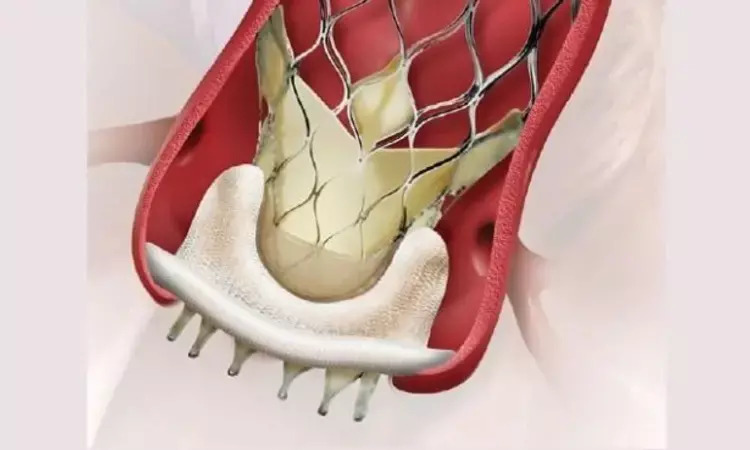- Home
- Medical news & Guidelines
- Anesthesiology
- Cardiology and CTVS
- Critical Care
- Dentistry
- Dermatology
- Diabetes and Endocrinology
- ENT
- Gastroenterology
- Medicine
- Nephrology
- Neurology
- Obstretics-Gynaecology
- Oncology
- Ophthalmology
- Orthopaedics
- Pediatrics-Neonatology
- Psychiatry
- Pulmonology
- Radiology
- Surgery
- Urology
- Laboratory Medicine
- Diet
- Nursing
- Paramedical
- Physiotherapy
- Health news
- Fact Check
- Bone Health Fact Check
- Brain Health Fact Check
- Cancer Related Fact Check
- Child Care Fact Check
- Dental and oral health fact check
- Diabetes and metabolic health fact check
- Diet and Nutrition Fact Check
- Eye and ENT Care Fact Check
- Fitness fact check
- Gut health fact check
- Heart health fact check
- Kidney health fact check
- Medical education fact check
- Men's health fact check
- Respiratory fact check
- Skin and hair care fact check
- Vaccine and Immunization fact check
- Women's health fact check
- AYUSH
- State News
- Andaman and Nicobar Islands
- Andhra Pradesh
- Arunachal Pradesh
- Assam
- Bihar
- Chandigarh
- Chattisgarh
- Dadra and Nagar Haveli
- Daman and Diu
- Delhi
- Goa
- Gujarat
- Haryana
- Himachal Pradesh
- Jammu & Kashmir
- Jharkhand
- Karnataka
- Kerala
- Ladakh
- Lakshadweep
- Madhya Pradesh
- Maharashtra
- Manipur
- Meghalaya
- Mizoram
- Nagaland
- Odisha
- Puducherry
- Punjab
- Rajasthan
- Sikkim
- Tamil Nadu
- Telangana
- Tripura
- Uttar Pradesh
- Uttrakhand
- West Bengal
- Medical Education
- Industry
Bioprosthetic valve fracture performed after transcatheter valve-in-valve intervention beneficial

Canada: Bioprosthetic valve fracture (BVF) performed after valve-in-valve (VIV) TAVR leads to superior long-term effective orifice area (EOA) without increased regurgitant fraction (RF), a recent study in EuroIntervention has shown.
Ultra-structure leaflet analysis showed that BVF timing could impact leaflets differentially, with more superficial damage but higher preservation of overall leaflet structure in cases where BVF is conducted after valve-in-valve.
Bioprosthetic valve fracture use is known to improve transcatheter heart valve (THV) hemodynamics following a transcatheter valve-in-valve intervention. However, it remains unknown whether BVF should be performed before or after the deployment of THV and its implications on durability. David Meier, University of British Columbia, St Paul's, and Vancouver General Hospital, Vancouver, Canada, and colleagues, therefore, aimed to assess the impact of BVF timing on the long-term durability of the transcatheter heart valve.
Assessment of the impact of BVF timing was done using small ACURATE neo (ACn) or 23mm SAPIEN 3 (S3) THVs deployed in 21mm Mitroflow valves versus no-BVF controls. Valves underwent accelerated wear testing (AWT) up to 200M cycles, equivalent to 5 years. Evaluation of the transcatheter heart valve was done by second harmonic generation (SHG) microscopy, hydrodynamic testing, histology, and scanning electron microscopy (SEM).
Based on the study, the researchers revealed the following:
- At 200M cycles, the regurgitant fraction and effective orifice area for the ACn were respectively 8.03±0.30%/1.74±0.01cm 2 (no BVF), 12.48±0.70%/1.97±0.02cm 2 (BVF before VIV) and 9.29±0.38%/2.21±0.0cm 2 (BVF after VIV).
- For the S3 these values were 2.63±0.51%/1.26±0.01cm 2 , 2.03±0.42%/1.65±0.01cm 2 , and 1.62±0.38%/2.22±0.01cm 2 respectively. Further, SHG and SEM revealed a higher degree of superficial leaflet damage when BVF was performed after VIV for ACn and S3.
- Histological analysis, however, revealed significantly less damage, determined by matrix density analysis, through the entire leaflet thickness when BVF was performed after VIV with the S3 and a similar but non-significant trend in ACn.
"BVF conducted after VIV offers superior long-term EOA without increased RF," the researchers wrote. "Ultra-structure leaflet analysis shows that BVF timing can differentially impact leaflets, with more superficial damage but greater preservation of overall leaflet structure when BVF is performed after VIV."
Reference:
The study titled "Timing of Bioprosthetic valve fracture in transcatheter valve-in-valve intervention: impact on valve durability and leaflet integrity" appears in the journal EuroIntervention.
DOI: 10.4244/EIJ-D-22-00644
Dr Kamal Kant Kohli-MBBS, DTCD- a chest specialist with more than 30 years of practice and a flair for writing clinical articles, Dr Kamal Kant Kohli joined Medical Dialogues as a Chief Editor of Medical News. Besides writing articles, as an editor, he proofreads and verifies all the medical content published on Medical Dialogues including those coming from journals, studies,medical conferences,guidelines etc. Email: drkohli@medicaldialogues.in. Contact no. 011-43720751


